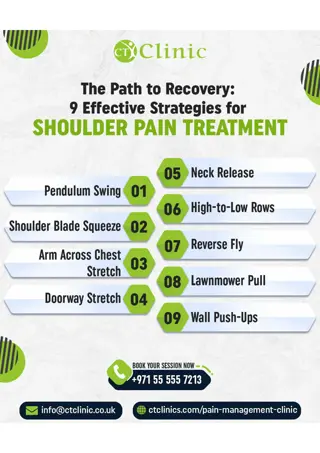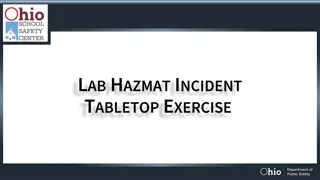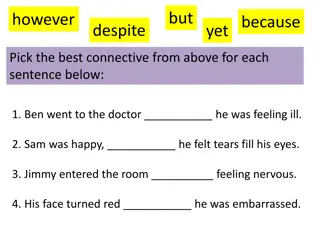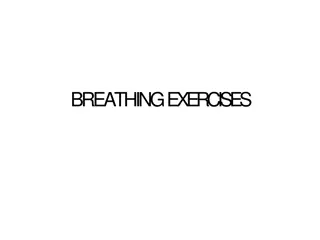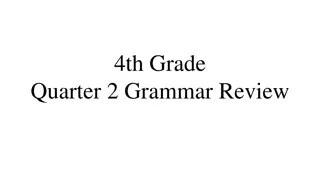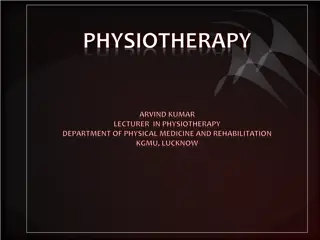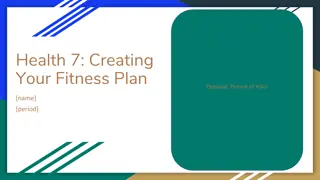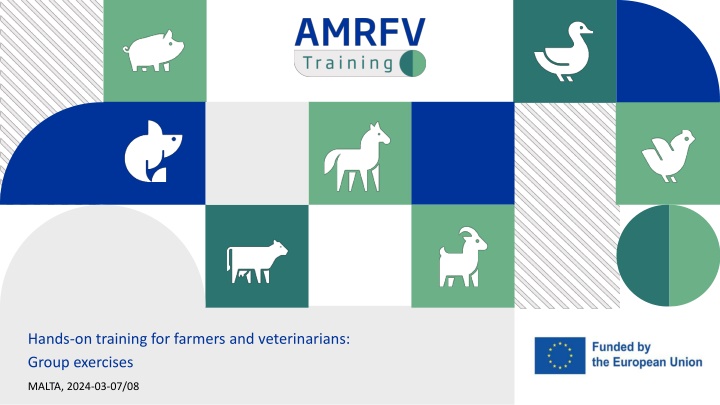
Practical Group Exercises for Farmers and Veterinarians - Collaborative Training 2024
Enhance collaboration between farmers and veterinarians through hands-on training focused on reducing antimicrobial resistance at the farm level. Explore barriers, find solutions, and create action points for implementing preventive measures. Foster effective communication for better animal health outcomes.
Download Presentation

Please find below an Image/Link to download the presentation.
The content on the website is provided AS IS for your information and personal use only. It may not be sold, licensed, or shared on other websites without obtaining consent from the author. If you encounter any issues during the download, it is possible that the publisher has removed the file from their server.
You are allowed to download the files provided on this website for personal or commercial use, subject to the condition that they are used lawfully. All files are the property of their respective owners.
The content on the website is provided AS IS for your information and personal use only. It may not be sold, licensed, or shared on other websites without obtaining consent from the author.
E N D
Presentation Transcript
Hands-on training for farmers and veterinarians: Group exercises MALTA, 2024-03-07/08
Prevention is better than cure Part I New regulatory framework Global need: reduction Antimicrobial resistance Part II Changes at farm level: Common understanding between farmers and veterinarians Preventive measures to be implemented at farm level
Prevention is better than cure Let s work together to prevent and reduce the use of antimicrobials By creating action points on YOUR (client s) farm
Foster collaboration between farmers and veterinarians There is more and more collaboration between the farmer and the veterinarian to improve animal health and to reduce the use of antimicrobials on farm level Because it is effective! The aim for today is to identify common key areas in which farmers and veterinarians can collaborate, which leads to further improvement.
We will do the following group exercises: GE 1 Barriers for the implementation of best practices? Identify the barriers for the implementation of best practices Group exercise 1 to reduce and responsible use of antimicrobials husbandry practices Barriers of veterinarians identified Barriers of farmers identified Group exercise 2 Find solutions 2 a 2 b to improve husbandry practices to reduce the barriers to reduce and responsible use of antimicrobials GE 2a Identify GE 2b Group exercise 3 Sharing, presenting outcomes 3 b GE 3a 3 a Measures to reduce and responsible use of antimicrobials List husbandry practices GE 3b
Announcement After group exercise 2a and 2b, you will be asked to write down a SMART action point for yourself to be implemented on your / your client s farm For example: By analyzing the blood and slaughter line test results and adjusting the vaccination policy accordingly, there will be no cough in weanling piglets within 2 months.
Group exercise 1 Identify the barriers for the implementation of best practices 45 MIN to further reduce the need to use antimicrobials You can go to your table number! Groups divided per specie: Malta Group 1 Bovine Group 2 Poultry & aquaculture Group 3 Poultry Group 4 Small ruminants 1 Group 5 Small ruminants 2 Group 6 Swine
Group exercise 1 Identify the barriers for the implementation of best practices 45 MIN Please, answer to the following questions: 1. What are the most used antimicrobials in your specie and for which conditions? 2. What are the barriers to reduce AMU for these conditions? Categorize the barriers in 3 (one type of barrier per page) Husbandry practices Reduce and responsible use of antibiotics Other Work with post-its to put your answers on the flip-overs
Plenary discussion Group Exercise 1 Malta Q1 Q2 - Barriers Groups Most used Antimicrobial Reduce use and responsible use of AM Husbandry practices Other Group 1 Group 2 Group 3 Group 4 Group 5 Group 6
Group exercise 2a - Find solutions to address these barriers husbandry practices Farmers and veterinarians mixed in 1 group, divided per specie Take the flip-over of previous group exercise: husbandy practices Take a new flip-over to answer the questions: What are the opportunities/ are there good practices? What are solutions to address these barriers? Create a SMART goal for yourself - to be implemented on your / your client s farm 50 MIN W ork with post-its to put your answers on the flip-overs
Group exercise 2a - Find solutions to address these barriers Reduce and responsible use of antimicrobials Farmers and veterinarians mixed in 1 group, divided per specie Take the flip-over of previous group exercise: Reduce and responsible use of antimicrobials Take a new flip-over to answer the questions: What are the opportunities/ are there good practices? What are solutions to address these barriers? Create a SMART goal for yourself - to be implemented on your / your client s farm 50 MIN Work with post-its to put your answers on the flip-overs
Group exercise 3a: Presentation of the outcomes: solutions to improved husbandry practices Each table addresses one presenter In what way can improved husbandry practices contribute to the reduction of AMU? Each presenter presents one outcome of his/her table session Then we continue to the next table mention an outcome that haven t been mentioned before!
Group Exercise 3a - Plenary discussion Presentation of the outcomes - Solutions barriers to improve husbandry practices Malta Q2 Solutions to address these barriers Groups Q1 - Opportunities / good practices SMART Goal Group 1 Group 2 Group 3 Group 4 Group 5 Group 6
Group exercise 3b: Presentation of the outcomes: measures to reduce and use antimicrobials in a more responsible way Each table addresses one presenter In what way can other measures to be implemented contribute to the reduction of AMU? Each presenter presents one outcome of his/her table session Then we continue to the next table mention an outcome that haven t been mentioned before! 20 MIN
Group Exercise 3b - Plenary discussion Presentation of the outcomes - Solutions barriers to reduce and have a responsible use of antimicrobials Malta Q2 Solutions to address these barriers Groups Q1 - Opportunities / good practices SMART Goal Group 1 Group 2 Group 3 Group 4 Group 5 Group 6






